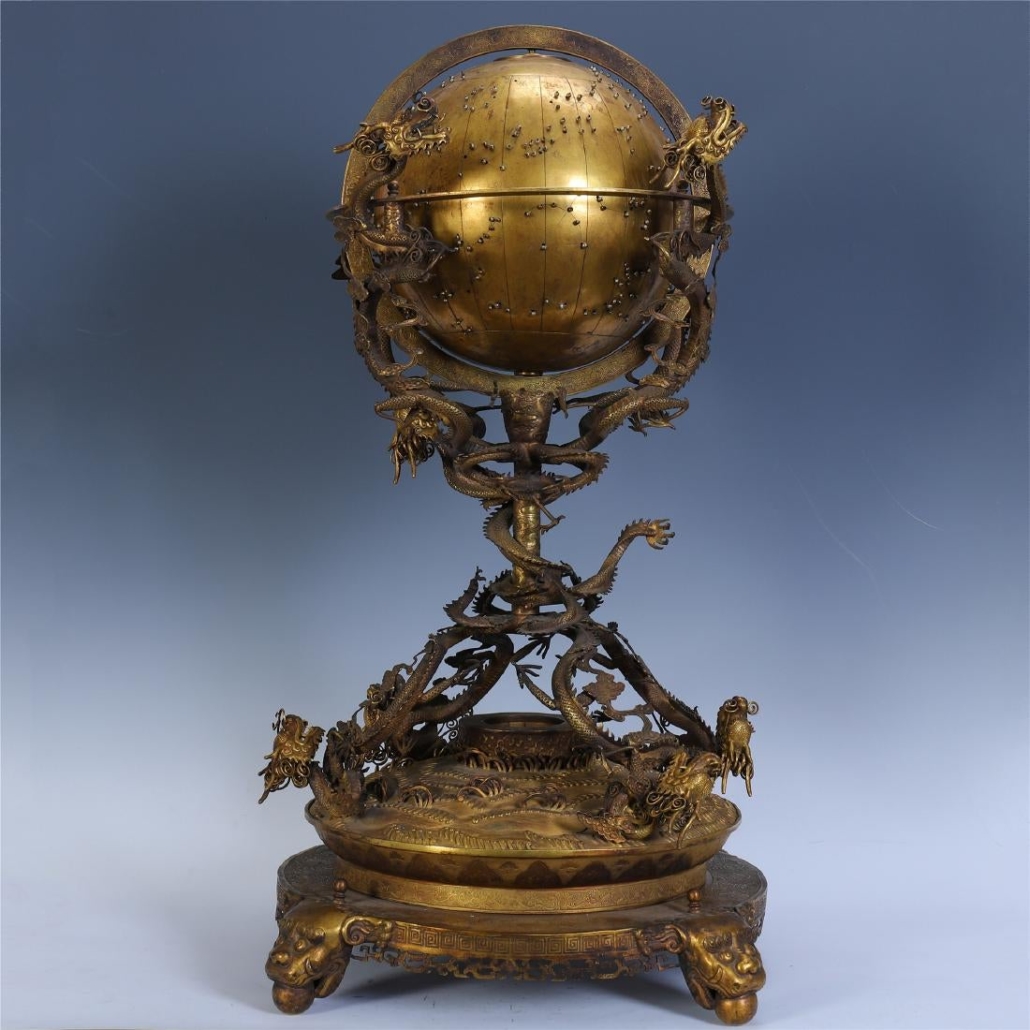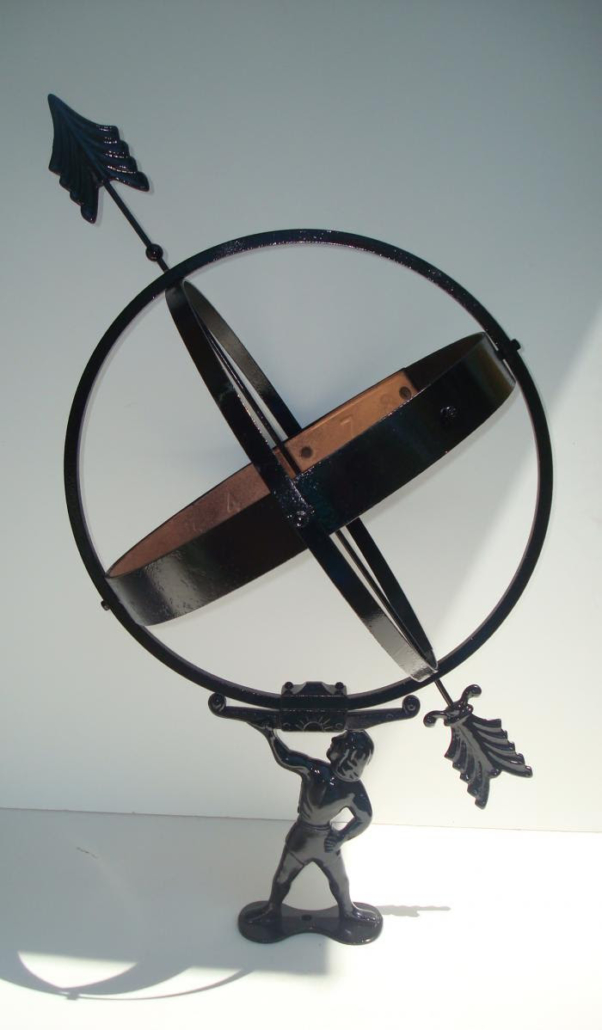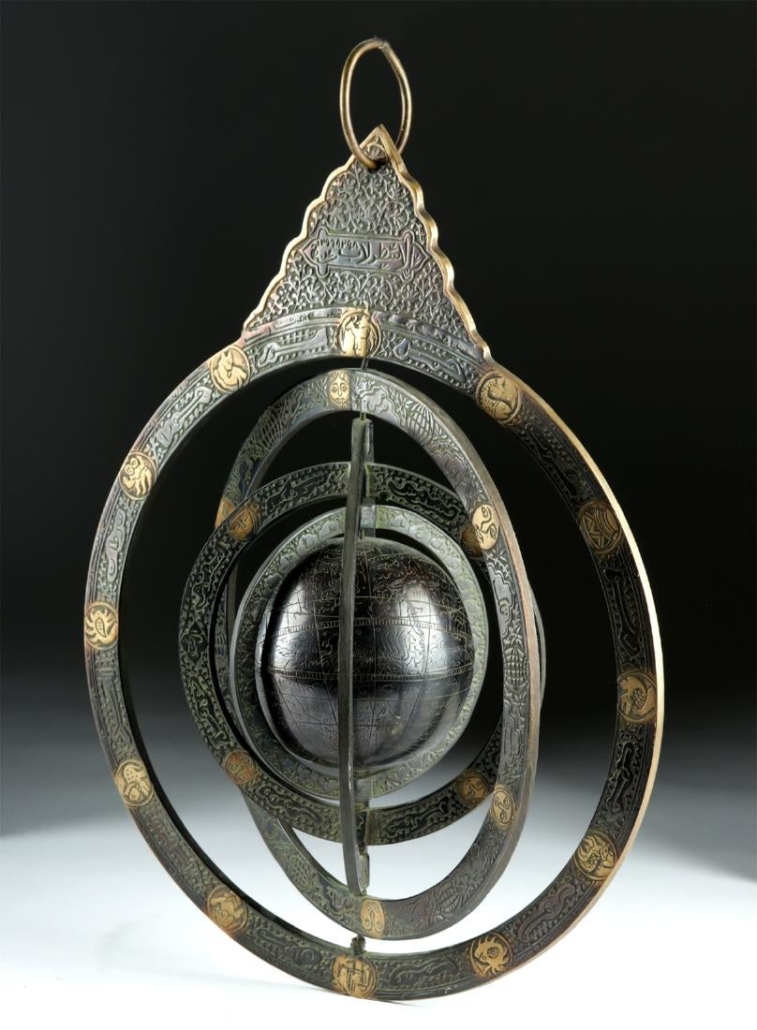
NEW YORK — The armillary sphere, which is a three-dimensional sundial, is a curious object. Its invention dates back thousands of years, although exactly where and by whom it was first made (a Roman mathematician? Chinese astronomer? Greek philosopher?) are hotly debated. It was also incorrectly designed in its earliest iterations.
“At least 2,000 years ago, armillaries were called armillary spheres. These were supposed to represent celestial bodies with the Earth in the center,” said Gray Baldwin, owner of New England Garden Ornaments in Sudbury, Mass. “And of course, as people learned more, they realized that that is totally wrong…”
The intersecting rings in an armillary — they often have just three rings, although some armillaries have more — represent the meridien, equatorial and other latitudinal lines. The gnomon (from Greek for “one who knows”) is the arrow that goes through the center of the armillary and is representative of the Earth’s axis. The armillary was meant to be sited on land so the arrow would point north toward Polaris, the North Star. “When the sun hits it and the gnomon casts a shadow, it hits pre-written numbers. With all of the circles calibrated to that specific location, you can tell the time,” Baldwin said.
Sometime in the mid-1800s, the armillary became a central piece in elaborate gardens. Even though they retain their functionality, they now serve primarily as decorative objects.
Aileen Minor Garden Antiques & Decorative Arts in Centreville, Maryland, views armillaries as “beautiful, interesting sculptures” for the garden. “To me, an armillary is even more decorative than a flat sundial because of the circular design. It’s more sculptural.”

While many makers of antique armillaries are today unknown, but unusual and desirable examples Minor has seen include ones by Swedish sculptor Sune Rooth, including 1940s designs with a seahorse motif, which collectors find appealing. She has also had in her collection one of Rooth’s circa-1940 armillaries featuring Atlas holding up the world.
Baldwin said Thomas Wright, who was known as “instrument maker to his majesty,” was well known for his sundials in the mid-18th century and was one of the few makers with real staying power. His designs are copied and sell well today as modern reproductions.
When looking for an armillary sphere, buyers should consider material, likely focusing their attention on copper, bronze or brass as iron can rust. Some armillaries are made for indoor use only, but collectors mainly seek out the ones intended for use in a garden design.

“It’s not like the cast-iron garden furniture world, where you can have it stamped Colebrooke Dale, Fiske, etc.. we don’t have that in the armillary world. There are some great makers and artisans in Maine and Europe, but again, [an armillary] does not have enormous resale value because of the maker’s name,” Baldwin said. “I think the only resale value that armillaries have is the material they were made of, the craftsmanship and beauty, and almost more importantly, is the stone pedestal that they sit on.” Before making a purchase, most collectors consider how a pedestal was carved, how it weathered, and what its overall condition is.
Mounting an armillary sphere on a tall pedestal makes it a focal point of a garden due to its height. “It becomes a vertical element and it can be very beautiful, particularly in the winter, because it’s a structural piece” Baldwin added. “I think that is the attraction.”

Kamelot Auctions in Philadelphia specializes in garden antiques and has sold a number of interesting armillary spheres over the years, including an iron armillary with copper cladding raised on a carved-marble, column-form base featuring a figural seahorse. Made around 1900, it sold for $2,200 in May 2019. Kamelot co-owner Joe Holahan said collectors are drawn to items that embody good design but said the most important factor along with condition is to “buy what you like, not because you think it’s going to be a good investment, but because you will enjoy it and it will work in your space.”
# # #


